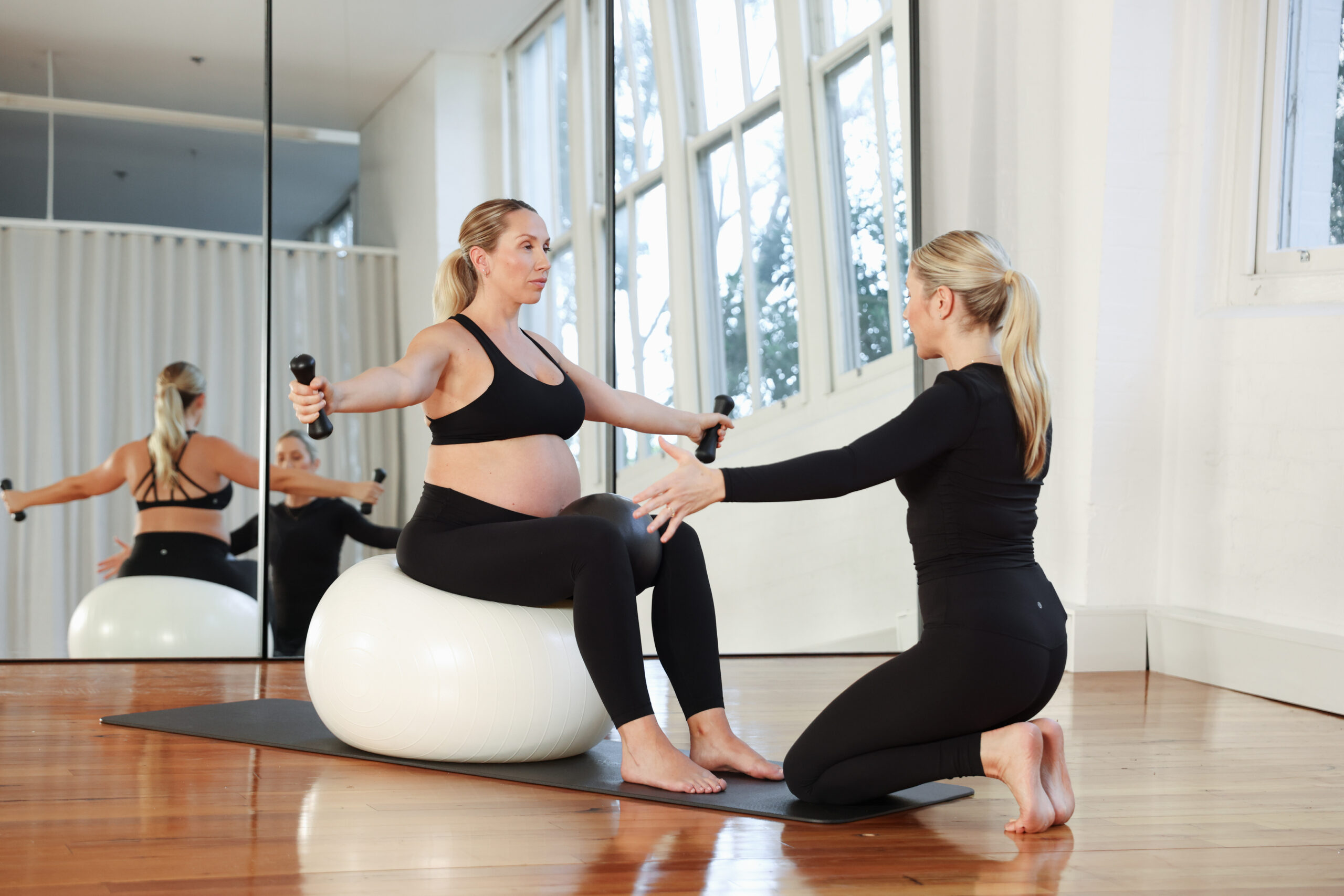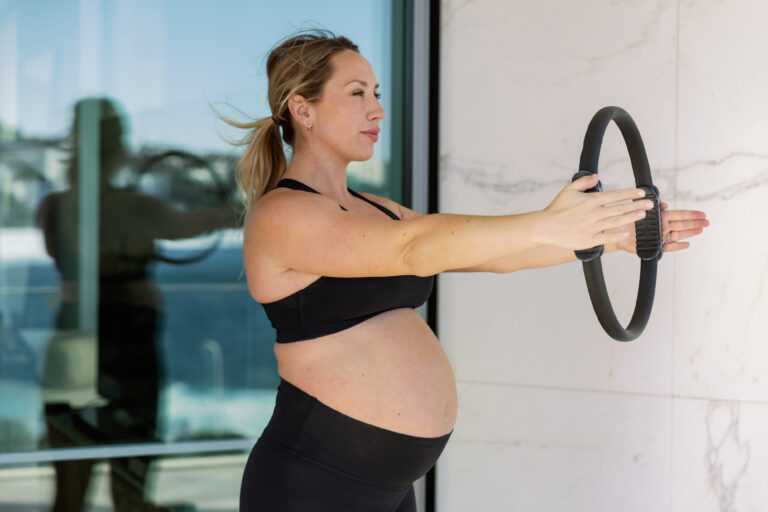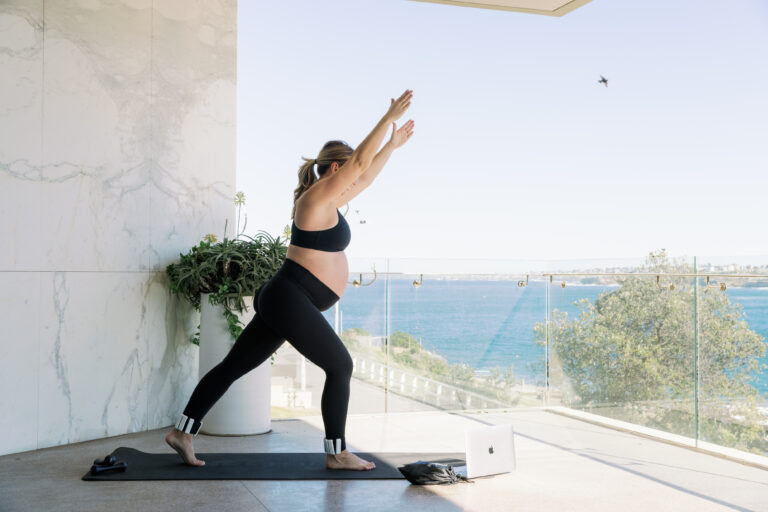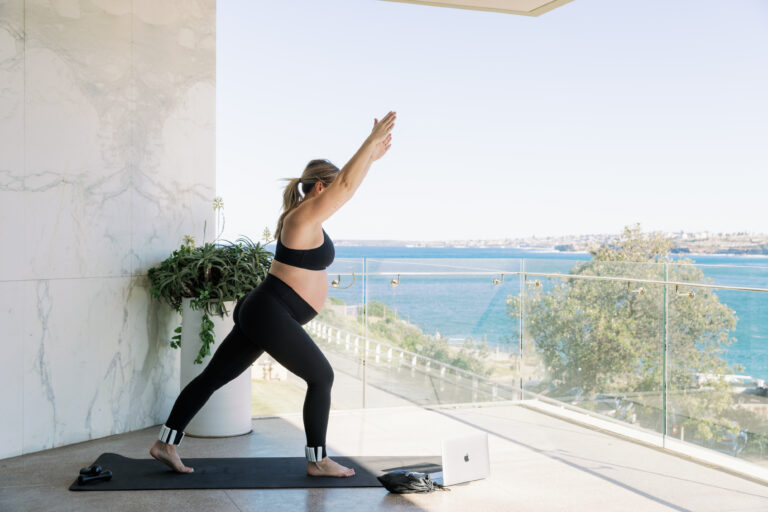Welcome to Fluidform for prenatal – your safe and effective guide to maintaining your strength and pelvic stability for the duration of your pregnancy. I will keep you feeling active, strong and confident as your body prepares for childbirth, and through to your postnatal recovery.
Within my prenatal program, we work through a variety of positions. Discover why we do these and how you will benefit from these movements. This blog post will dive into the following:
- Movements
- Small Equipment
- How to challenge yourself
- How to lighten the load
MOVEMENTS
- Lunge
Imbalances through our pelvis are often the cause of pain and discomfort during pregnancy (even walking can be uncomfortable and painful). Your pelvis is more mobile during pregnancy (helps with the adjustment of your spine and pelvis as you prepare to give birth). Holding and practising your lunge position helps to strengthen the muscles supporting the pelvis and hips.
- 4-point kneeling
In this position, your deep abdominals are active and engaged, working against gravity to contract and support your baby. Strengthening and maintaining this engagement throughout your pregnancy helps with your delivery and postnatal recovery. This position helps to regain length and mobility through your spine and helps to strengthen your upper back and shoulders. As your chest grows and we prepare our bodies for lifting and carrying your baby, the position and strength of your upper spine and shoulders is very important.
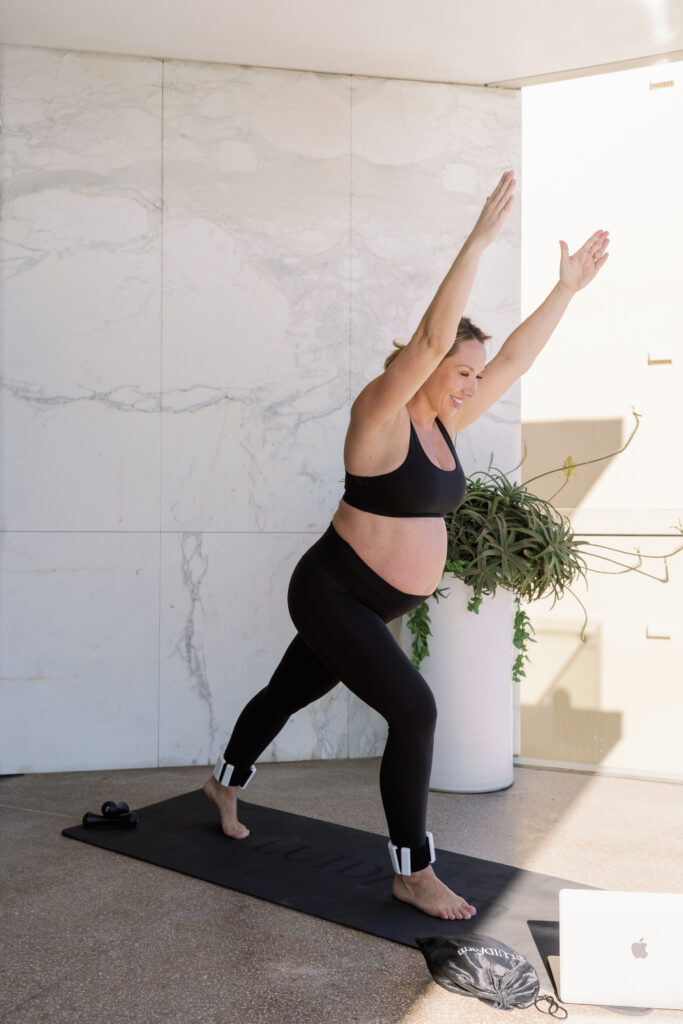
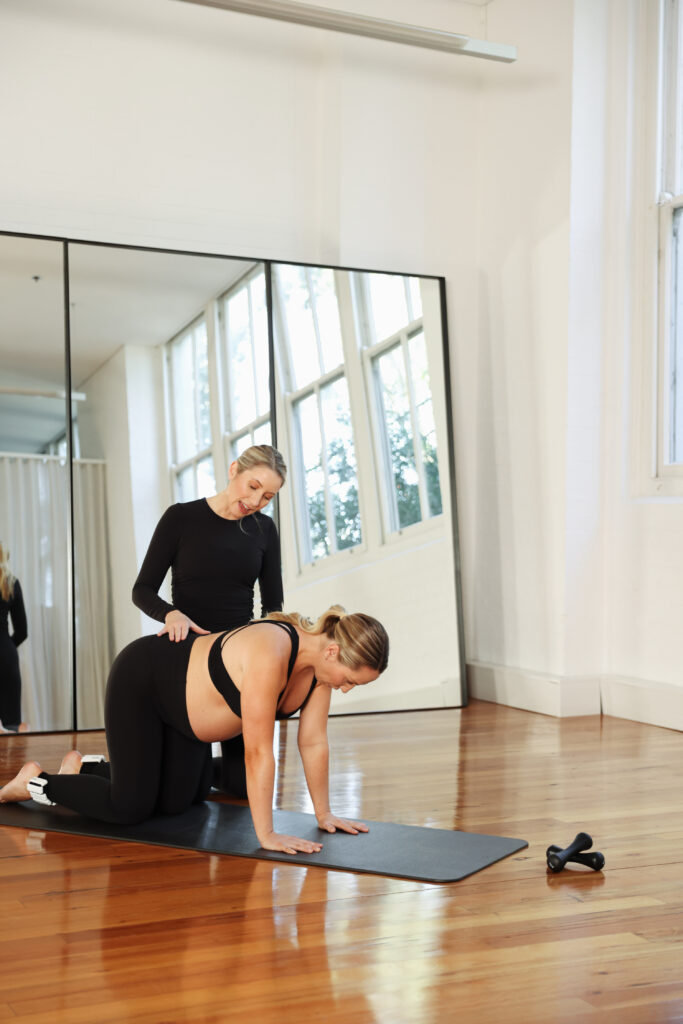
- Low-lunge (kneeling on one leg, with your other leg bent to 90 degrees)
This is a safe and supported position, where you will feel an opening through the front of your hips while activating your hips and pelvis to help stabilise. As your body changes and moving becomes more difficult, this position maintains strong hips and legs to support you getting down and up from the ground.
- Sidelying
Despite not actively working your abdominals, it is important to challenge them through various safe positions to help with engagement and connection as your belly grows. Side lying is a supportive position to improve your postural alignment from your pelvis through your spine. This also helps to strengthen and mobilise your hip joints, ensuring balance through your pelvis and legs.
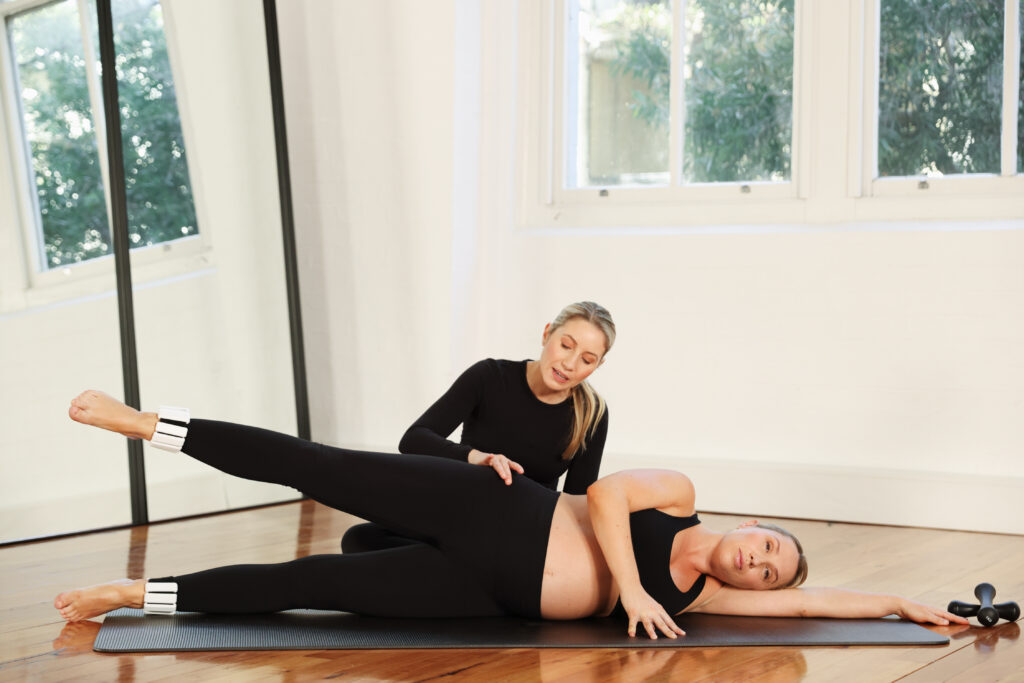
Next, we explore the small equipment we use to maintain your strength and stability.
EQUIPMENT
- Theraband
Allows you to control the tension and difficulty to suit your own needs. The open-ended theraband allows you to work through a greater range of movement than a closed resistance band.
- Swiss ball
Challenges and improves mobility through your spine and pelvis. The softness of the ball allows gentle, supported movement as you rock through the pelvis, seated on the ball. In this position, your core and pelvis are working to help stabilise.
The swiss ball is used to support you, bringing you up off the ground and working in an elevated position. The instability of the ball requires you to stabilise through your shoulders and core (abdominals and obliques).
- Small ball
Positioned at the base of your spine in a roll back movement, the small ball provides feedback as your pelvis moves back into the ball, which helps to contract the lower abdominals. Placed between your thighs, the small ball provides feedback and connection between your legs, which helps to engage your inner thighs.
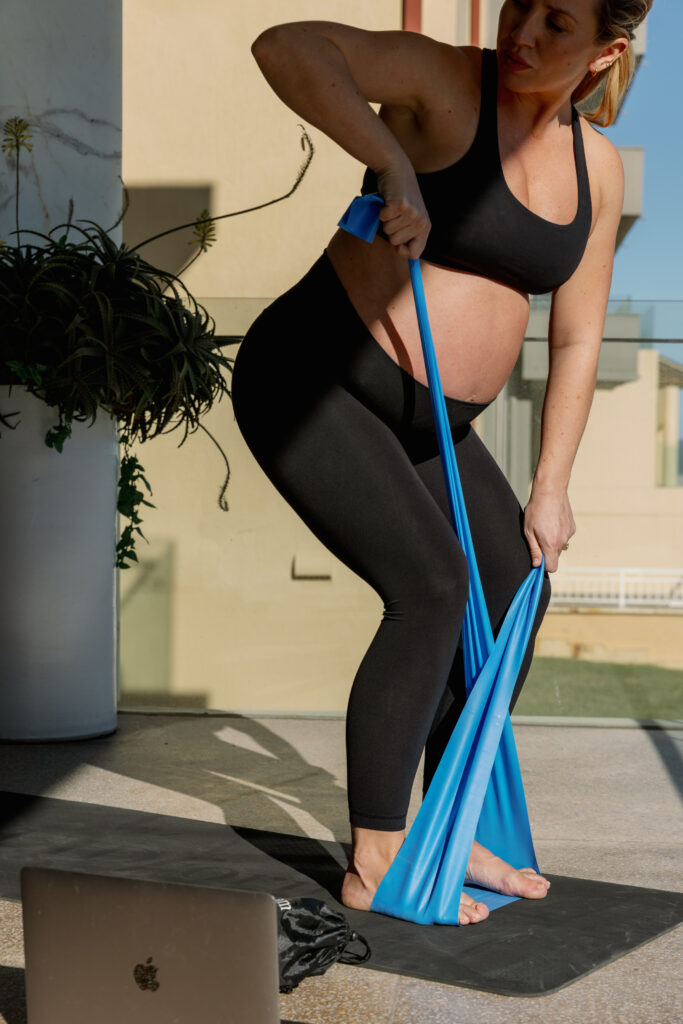
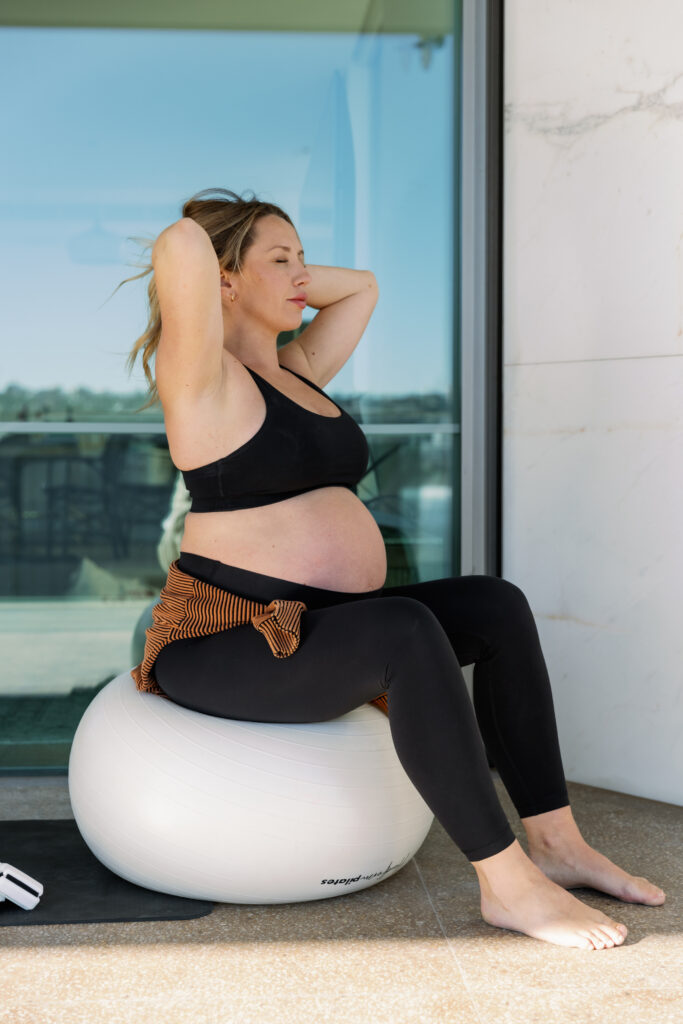
Now you have an understanding on the movements we do and the equipment we use to maintain your strength during your pregnancy, let me show you to have add challenge to your workouts.
First and foremost, it is important to listen to your body and move safely to protect yourself and your baby. If anything feels wrong or painful, pull back, reset your body, inhale and as you exhale begin to move again, staying aware of where you feel tension, what feels good and what you need to avoid.
CHALLENGE
Here are three tips to increase the intensity of your workouts and continue to challenge yourself.
- Wear ANKLE WEIGHTS during all workouts to add load and challenge your joints.
- Perform arm sequences in a small SQUAT POSITION, to challenge your glutes and coordination.
- Add a 10 second STATIC HOLD to your lunges and leg lifts to fire your stabilising muscles.
Are you a beginner, or finding it difficult to keep up with the exercises? That is completely fine. Here are my tips to lighten the load:
Above all, it is important that you feel safe and are working within a comfortable range of movement. If you need to lighten the load:
- Remove your ankle weights.
- Work with lighter bands for less resistance.
- Take rests during the workout.
Tip: Any exercises that combine upper and body movements, do them separately.
It is important that you feel safe and are working within a comfortable range of movement.
